Enchanted Realm: Fawn Galli Creates Magic in Her Boerum Hill Townhouse
Vintage and contemporary elements mixed with whimsical fairytale touches highlight the brownstone’s historic features.

Vivid green floor-to-ceiling drapes and out-of-the-ordinary furnishings, including tubular 1980s armchairs by Norwegian designer Terje Ekstrom and modular metal stools that can be grouped as a coffee table, stand out against the pale gray walls of designer Fawn Galli’s Boerum Hill townhouse. A paper lantern from Spanish designer Jaime Hayon’s Formakami series, a contemporary expression of age-old Asian tradition, hangs above. Photo by Jeff Holt
Fawn Galli calls the renovation of her family’s imposing Boerum Hill brownstone “minimal,” surely a masterpiece of understatement. In fact, she and her husband, architect Julio Fernandez Salcedo, converted the four-story building from three apartments to two, created several new baths, installed a souped-up Ikea kitchen in the rear parlor, laid new herringbone floors throughout, and made a host of other tweaks.
It’s all in a day’s work for Galli, an interior designer with a busy Manhattan-based practice. She’s a veteran of many previous renovations for clients, as well as of her own family’s former Carroll Gardens townhouse, their 18th-century Colonial in Litchfield County, Connecticut, and an investment property in Bed Stuy. But it’s obvious that Galli’s chief pleasure is not renovating, but decorating, where all hell breaks joyfully loose. Self-taught as a designer, Galli has an aversion to following the usual rules, deploying color, textiles, and eclectic furnishings in a witty, worldly, irreverent way. “This is an old, romantic townhouse,” she says, gesturing around the high-ceilinged parlor floor where the afternoon sun, striking the painted glass panels in the original pocket doors, casts a golden glow. “I’ve layered vintage and contemporary elements with whimsical fairytale touches to highlight that. It’s very much about the mix.”
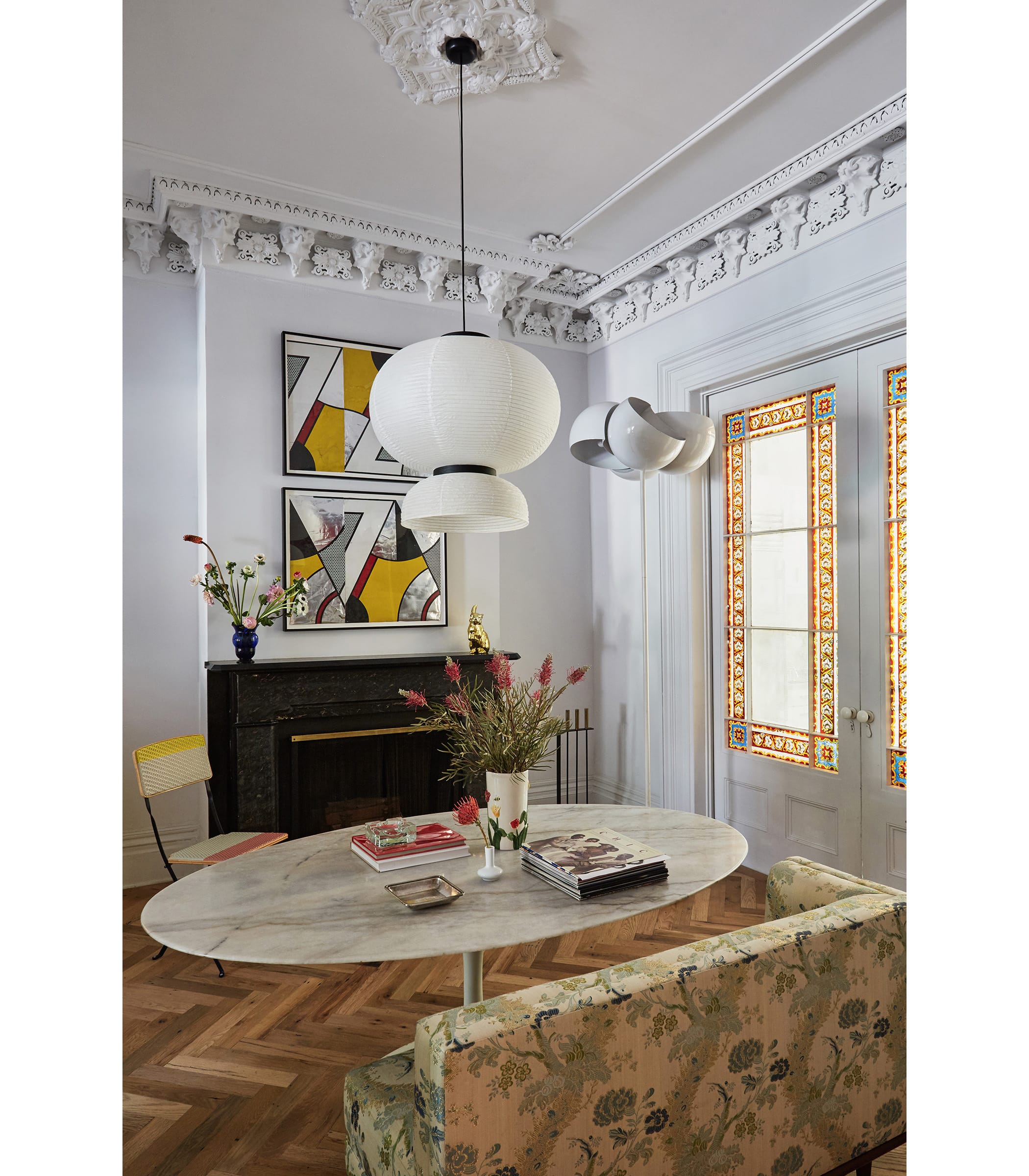
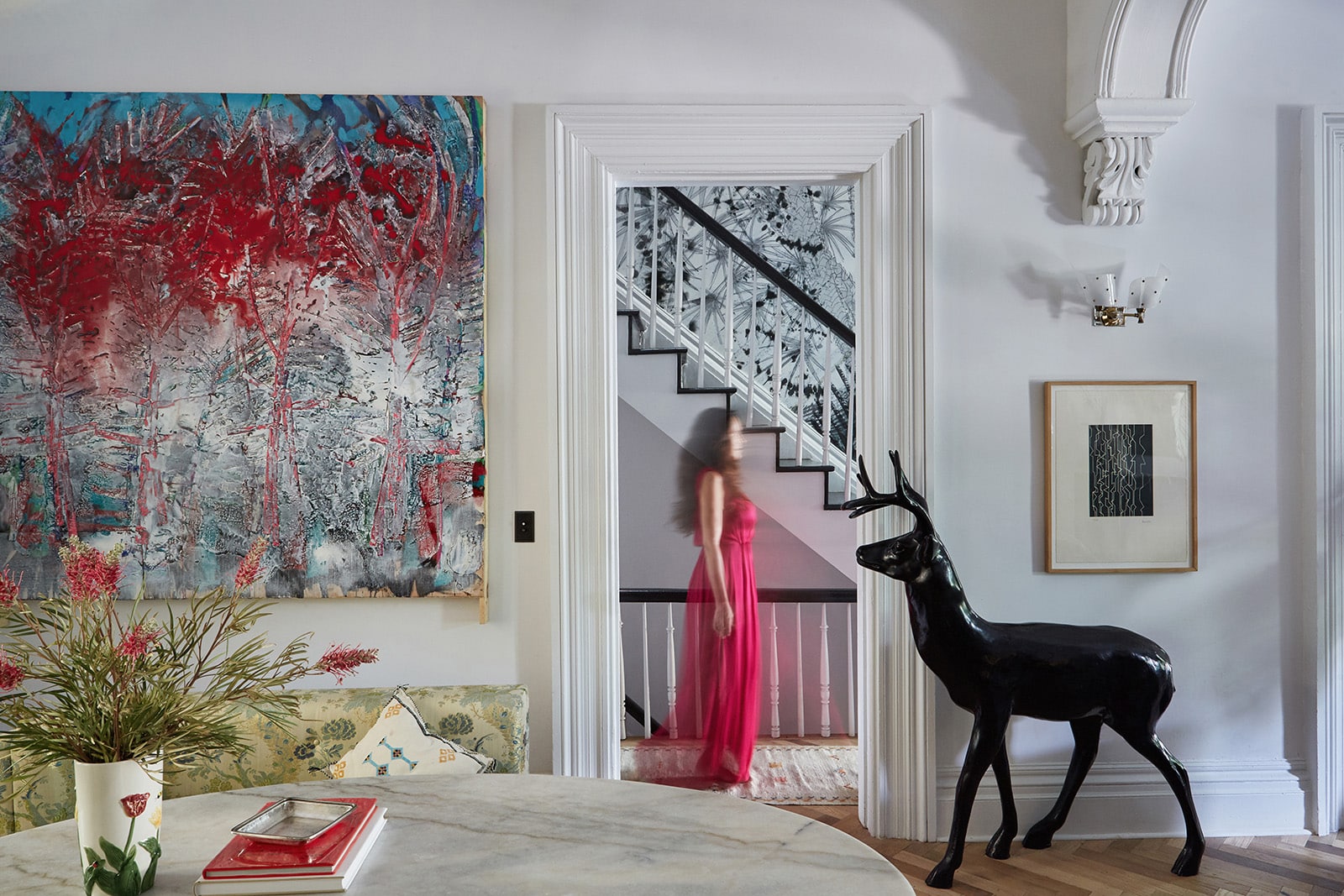
There’s not a predictable corner in Galli’s house. Almost everything could qualify as a “statement,” including the custom tropical storm wallpaper marching up the stairwell; shiny, sculptural furnishings that lean 1970s and ‘80s; a life-size deer statue standing at attention in the dining area; a ring of yellow feathers dangling from the kitchen chandelier; a powder room with black lace curtains at the window. And that’s just the parlor floor.
Galli’s exuberant aesthetic stems from five core concepts, elucidated in “Magical Rooms: Elements of Interior Design,” a lavish book illustrating eight of her projects, co-authored with Molly FitzSimmons and published by Rizzoli in 2019: Nature, Surrealism, Bohemian, Sparkle, and Clashing. “Things shouldn’t match,” Galli says firmly. “I relish the tension of clashing color and pattern.”
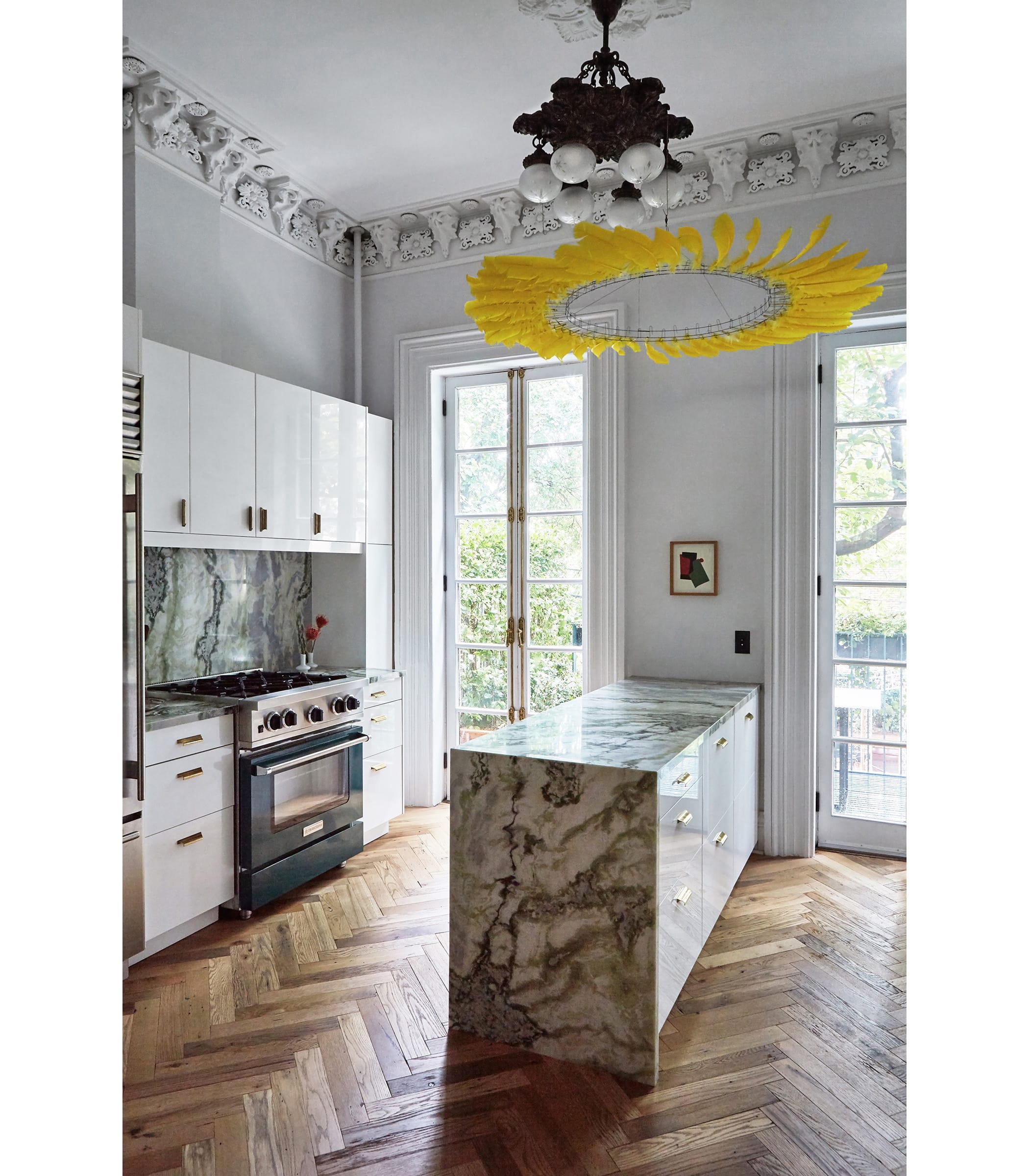
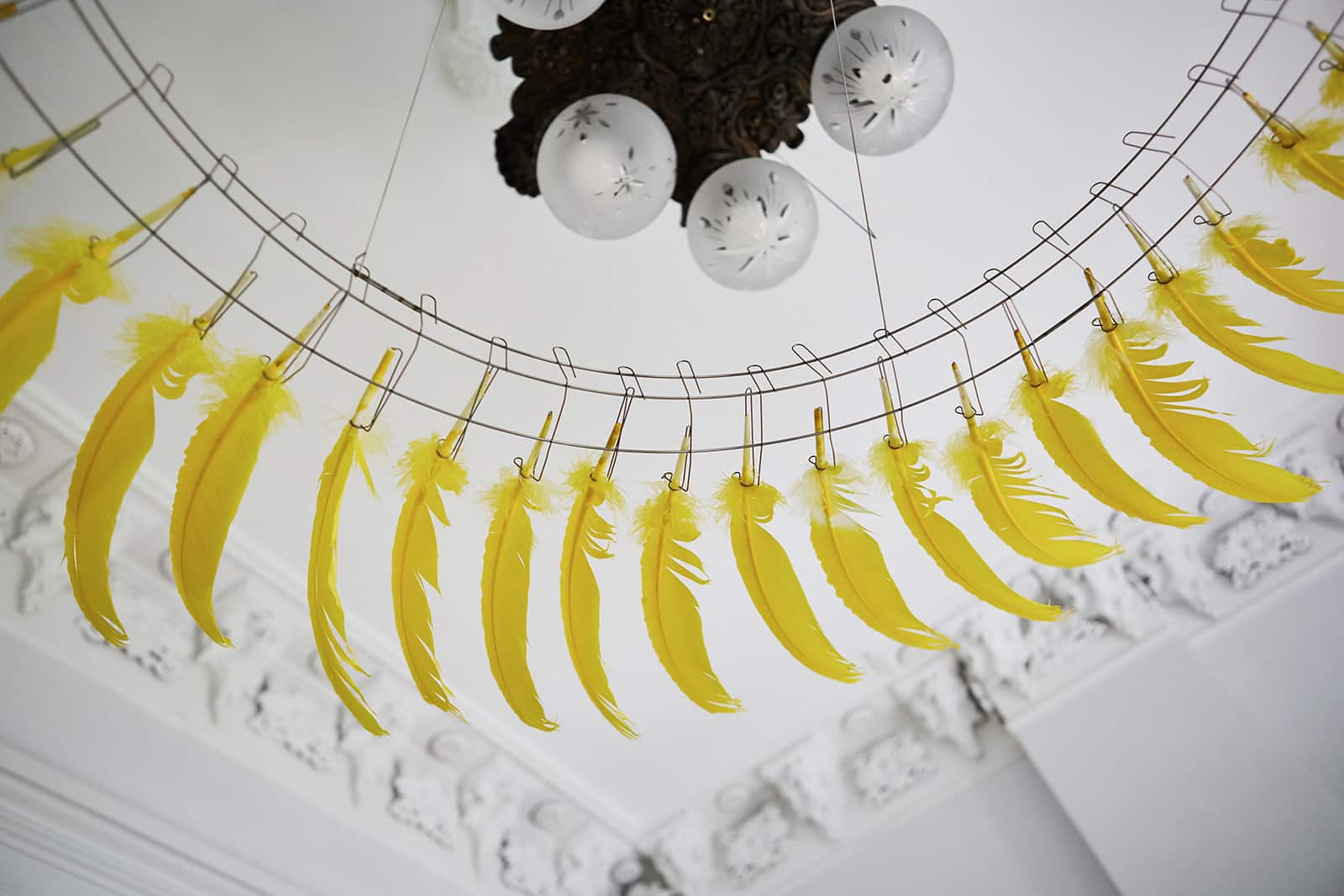
The house itself is a magnificent, generously proportioned envelope for Galli’s abundant creativity. Its intact mid-19th century detail begins with Gothic-style ironwork and pointed-arch doors at the entry, and continues within, with ornate Italianate plasterwork on the parlor floor. The house was in a generally fine state of preservation when the couple, who had been living in a Carroll Gardens duplex with their two sons, Gaspar, now 18, and Laszlo, 15, and wanted more space, found the building five years ago after a brief search. “We bought it for the plasterwork and the six working fireplaces,” Galli says, even though the building was divided inconveniently for their purposes. “It was a little bit cut up, but it had been owned by the same gentleman for sixty years, and it hadn’t been overly renovated.”
Galli’s unconventional style grows directly out of her life experiences. Raised by hippie parents in northern California, first in a houseboat, then a cabin without plumbing or electricity, and later in a Catskills home heated with wood, she calls the lush forested world of her childhood her “first and deepest influence.” Her obsession with nature dates from early memories of “lying in the redwood forest with light coming though, and the mist and the moss…it was a magical, enchanted realm.” Galli brings that sense of wonder to bear on all her projects, even in the most urban settings. “As a designer, I’m always trying to cast a spell like the one the forest cast on me.”
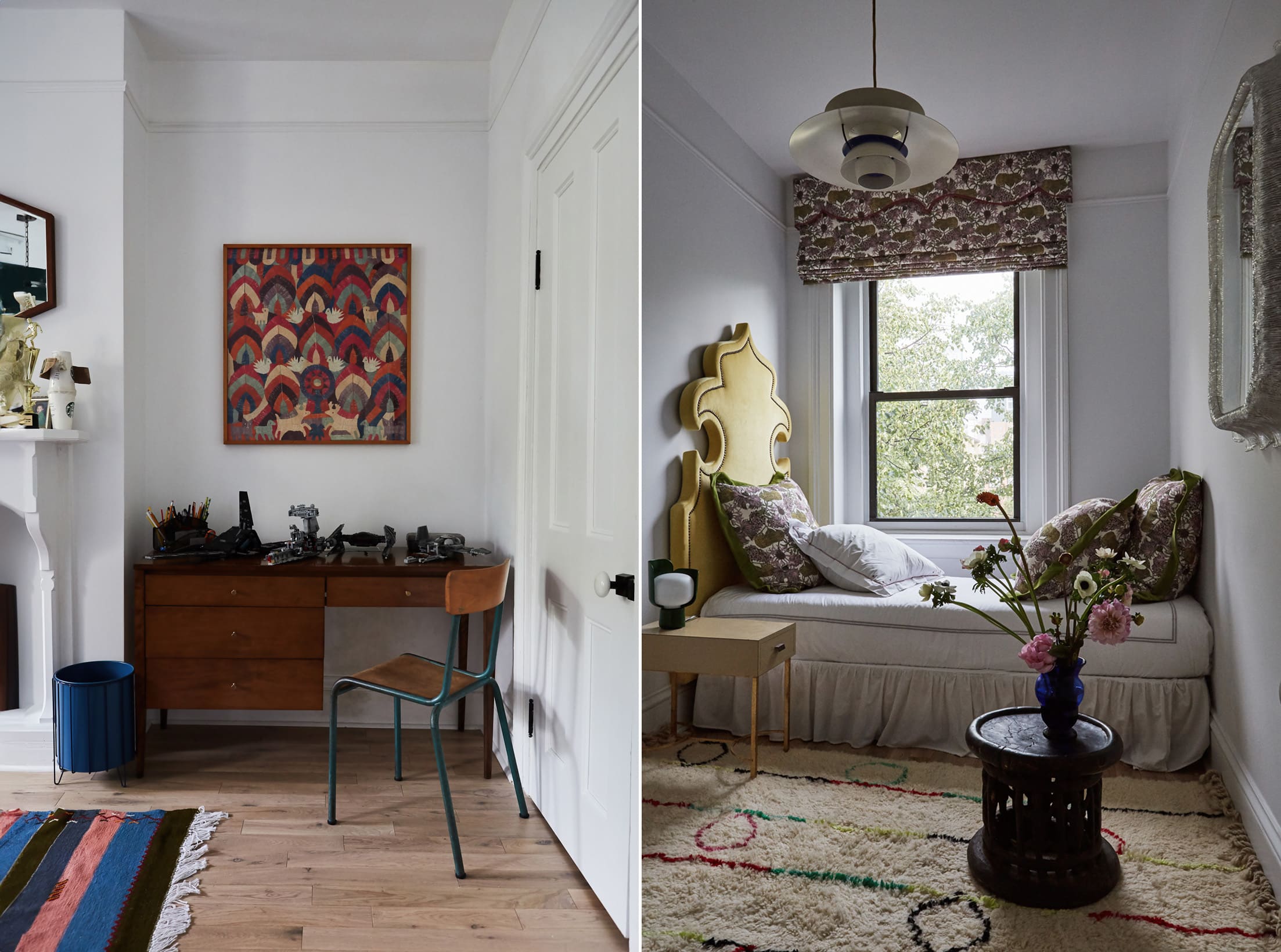

Her affinity for boho style stems from the same era, as she writes in her book, recalling “books and fringe, instruments and hanging plants” in her childhood homes. Her interest in Surrealism was born of a love for the work of Salvador Dali and M.C. Escher. The Sparkle factor comes from Galli’s fond memories of New York City and Paris in the disco era. Later, “I was a downtown party girl,” she recalls.
Galli’s career grew in a similarly organic way. After leaving Northeastern University, where she majored in political science, she spent two years in Paris, continuing her studies at the Sorbonne and combing the fabled flea markets. Settling back in New York, she found an apartment in Greenwich Village and a job in the office of architect Robert A.M. Stern, then dean of Yale architecture school. “I was lowest on the totem pole, sharpening pencils. I did not have formal design training, but they saw something,” Galli says. “At the time, Bob Stern had had some bad press for not being innovative enough, and he wanted a cool interior” for his New Haven apartment. Galli perused design books in bookstores (she couldn’t afford to buy them) and prepared a presentation. “I went into the office on a Saturday when I knew he’d be there, waited until he was in the kitchen, and showed him my look book,” she says. “I think it was my audacity” that convinced Stern to give her the go-ahead on decorating his pied-à-terre. That was her first commission.
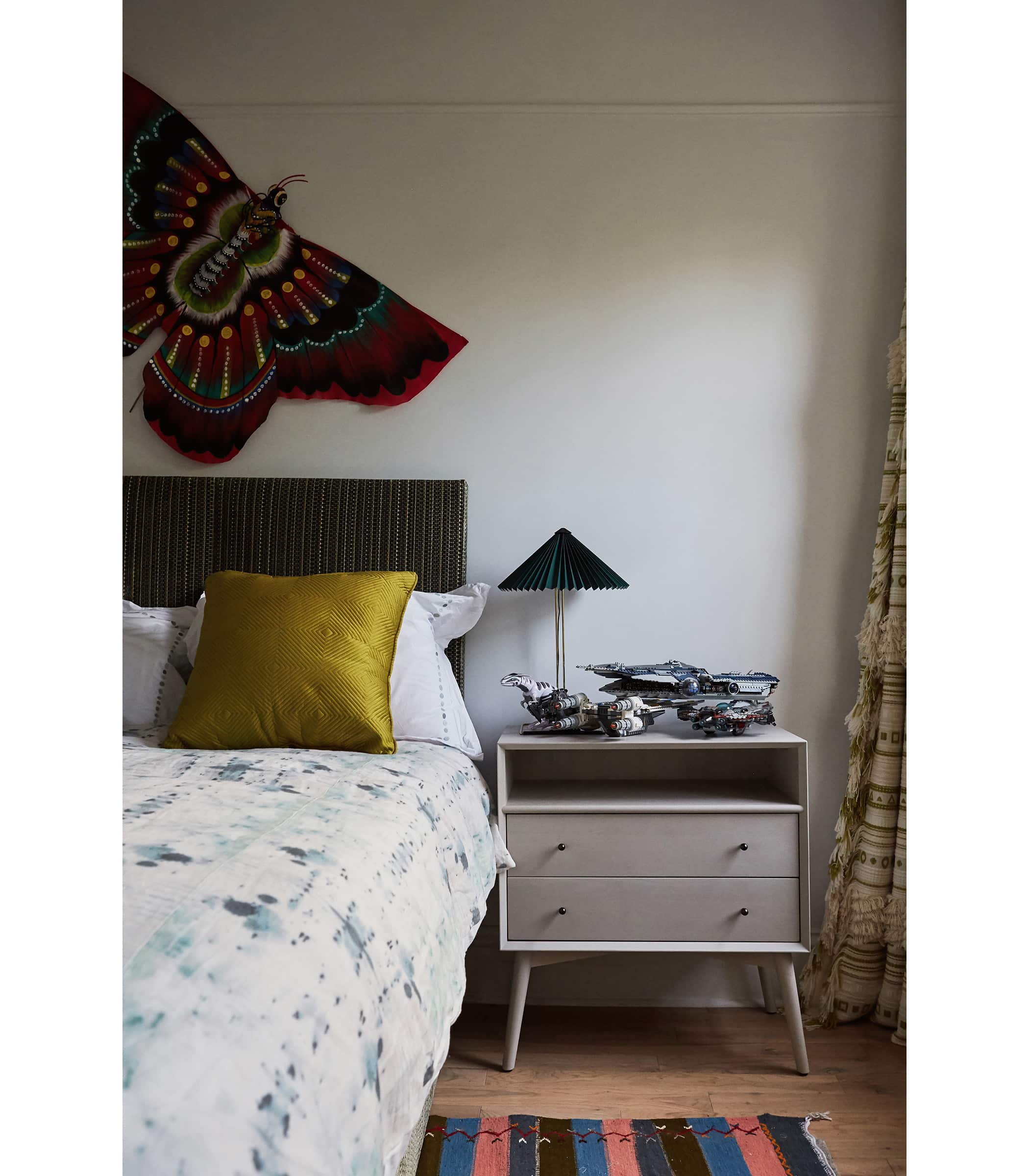
From there, Galli did a stint in the New York office of interior designer Peter Marino, then moved to Madrid for a year. She launched her firm, Fawn Galli Interiors, on her return to the U.S. in 2007, and began to amass the impressive portfolio that includes residential and commercial projects in New York City, upstate New York, L.A., Paris, Milan, and elsewhere. Recently, Galli bought an apartment on Paris’s Left Bank, where she intends to open an outpost.
Well-traveled though she is, Galli has immense fondness for the vintage architecture of her home borough. “I love Brooklyn townhouses,” she says. “I understand them. I know what to do with them. You can build new construction, but these townhouses are irreplaceable treasures.”
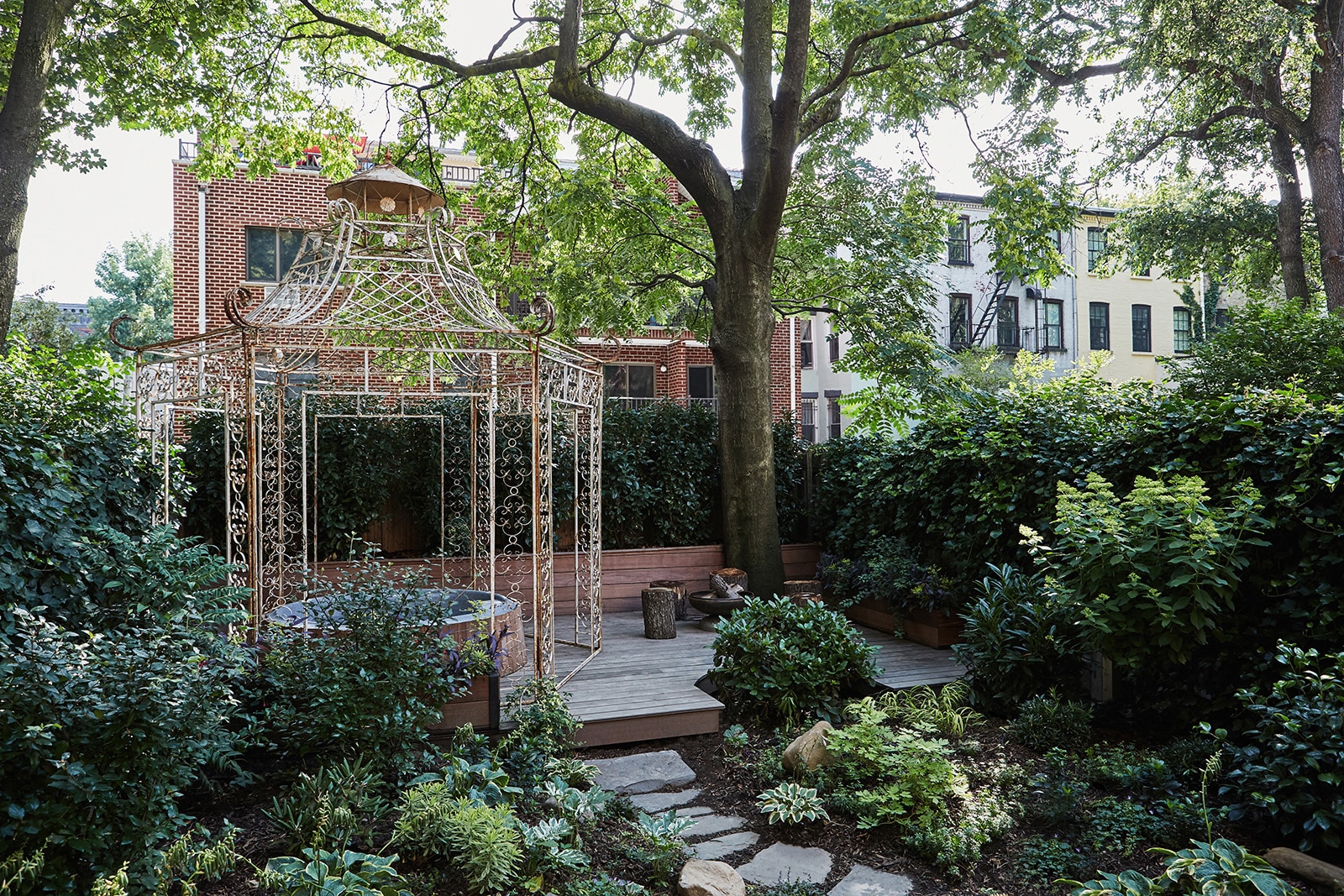
[Photos by Jeff Holt]
Editor’s note: A version of this story appeared in the Spring/Summer 2024 issue of Brownstoner magazine.
Related Stories
- Cobble Hill Design Duo’s Own Family Apartment Is an Ode to Fun, Comfort, and Attention to Detail
- Colorful Yet Practical Furnishings Refashion Bed Stuy Townhouse for Young Family
- Vibrant Vibes Enliven a Fort Greene Brownstone
Email tips@brownstoner.com with further comments, questions or tips. Follow Brownstoner on X and Instagram, and like us on Facebook.

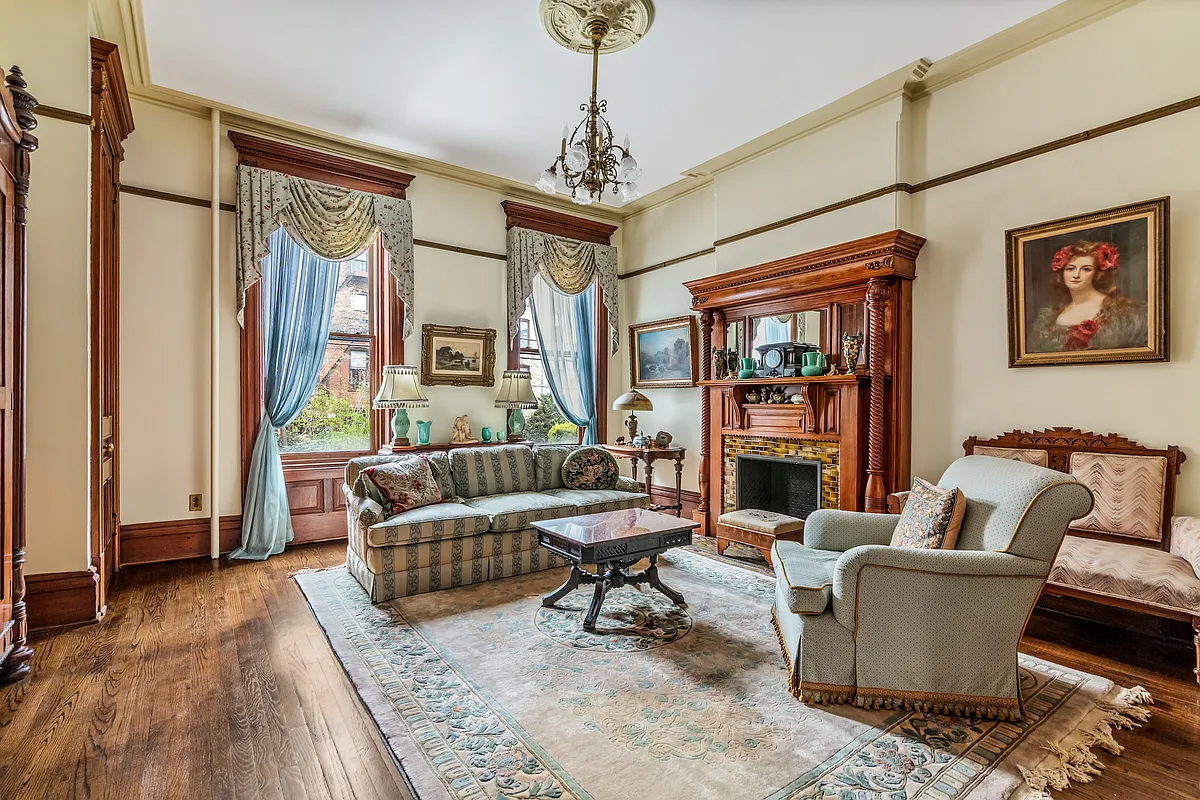

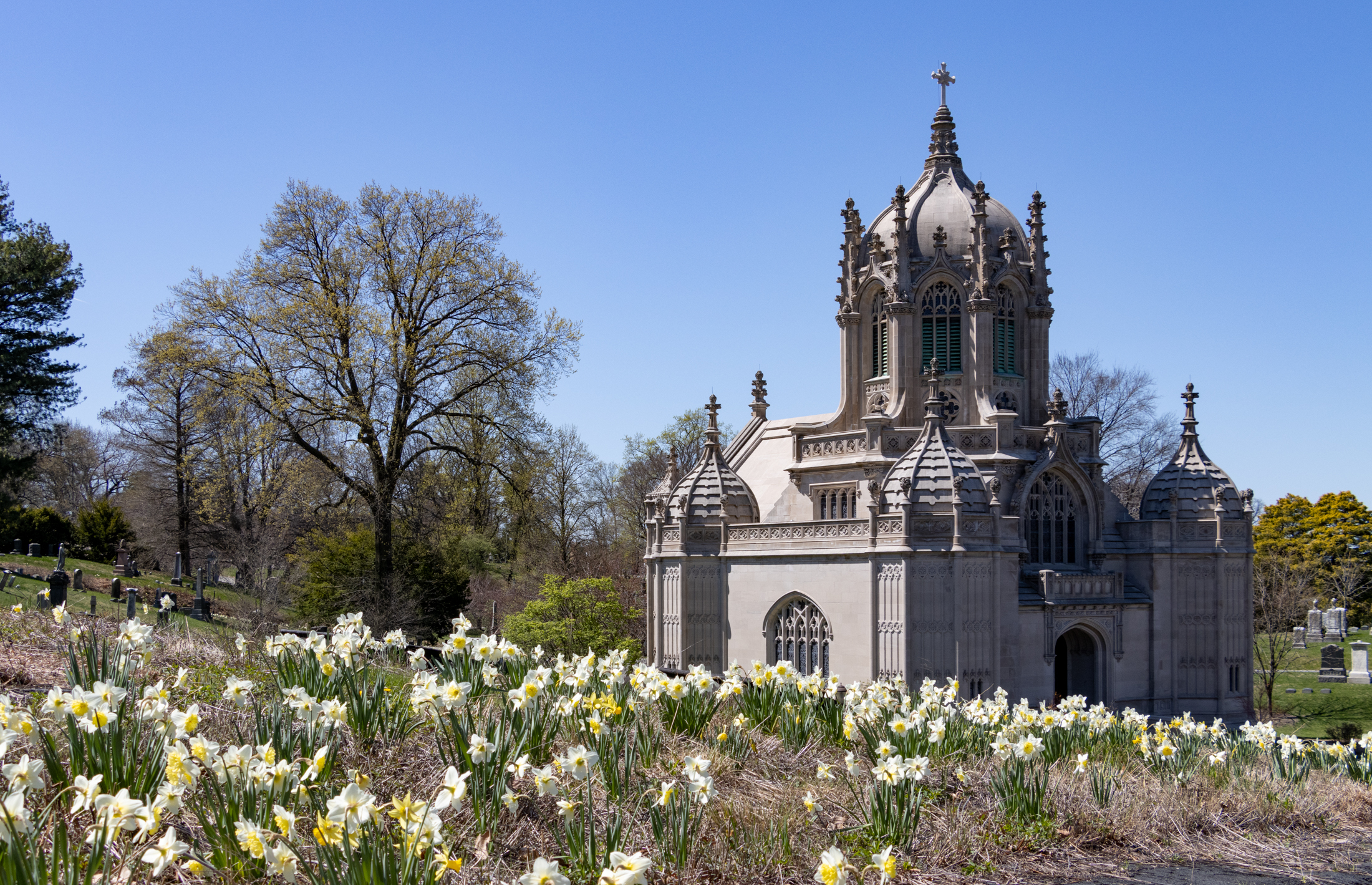

What's Your Take? Leave a Comment